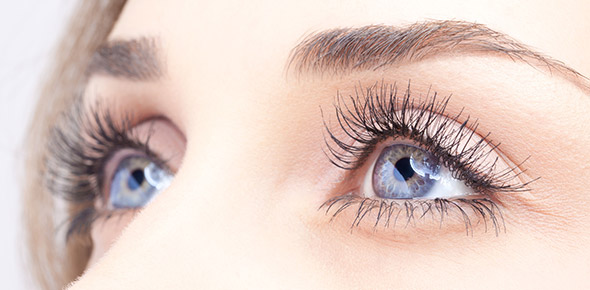Ectropion is the abnormal inversion of the:
A cochlear implant is used to transmit external sound directly to...
Aqueous humor is found in the:
An operation that is performed when the sensory layer of the retina...
The most common benign eyelid tumor is:
One of the fundamental goals of any maxillomandibular procedure is to...
The removal of the redundant folds of the skin of the eyelid and any...
Which of the following instruments would be used to remove nasal...
Mid face advancement is performed to correct a bony deformity of...
Which of the following best describe a LeFort 1 fracture?
A soft dressing or hard ____ may be used to protect the eye after...
At what age is a cochlear implant contraindicated in children?
A suction device is used to remove the morcellated tissue.
What is function of the iris?
The surgical removal of a cholesteatoma and mastoid bone with or...
The suture most common to ophthalmology
When the surgeon is looking away from the field, the surgeon:
Which of the following is a purpose of arch bars?
Most endoscopic procedures of the nose are performed to treat...
The mucous membrane which line the eyelid and covers the anterior...
What instrument is used to remove the recipient cornea during...
___ is performed to create a permanent opening in the tear duct for...
Clear, watery fluid that fills the anterior and posterior chambers in...
Which of the following is NOT a bone of the orbit?
In LeFort _____ fractures there is a separation of all facial bones...
A procedure used to strengthen a weak muscle by excising a portion of...
Which of the following statements about ophthalmic surgery is FALSE?
An incision is made in the _____ below an obstruction with a #15 blade
The submandibular gland may be removed because of chronic infection,...
What forms the lateral walls and floors of the boney orbit, which...
Patients may frequently experience _____ after ORIF procedures from...
_____ are the primary means of repairing facial fractures. (HINT:...
What dictates that arch bars must be tighten in a clockwise fashion so...
Arch bars are fixed into position with:
A glassectomy is almost combines with a total laryngectomy to treat...
A pigmented contractile membrane composed mainly of muscle tissue is...
What size stainless steel used do you need for a MMF?
______ is characterized by persistent pain and is usually associated...
The ____ must keep track of all plates and screws that are used during...
Many ____ have 2 hinges, these are identified as double action...
Before repairing of the frontal sinus fractures, the sinus mucosa must...
The thread gland is located in the mid neck and overlies the trachea...
Earwax is known as ____
The primary reason for performing an adeniodectomy are ____ infection...
A process in which the lens continually changes shape to maintain the...
What vasoconstrictor medication is utilized for the nose, mouth, and...
Which of the following statements regarding ophthalmic sutures is...
Eye sponges made of lint-free _____ or similar material.
Most ophthalmic surgery is performed using a regional anesthetic with...
The lower jaw bone is the
Bart Simpson had MMF procedure done. The patient is stable; was taken...
Cryotherapy involves the utilization of:
Cholesteatoma, eustachian tube dysfunction, neoplasm, or congenital...
The middle ear extends from the TM to the medial wall of the middle...
The only prep that can be instilled in the eye is:
The _____ transmits the vibrations of the TM and the other ossicles to...
The drug that should never be injected
Ear infection of the ear is called
Myringoplasty is performed to close a small, nonhealing hole in the...
Used to stain the cornea for detecting corneal abrasions and foreign...
System which secretes and conducts tears:
What instruments is utilized as a diagnostic tool to examine the ear?
The outer coat of the eye made up of transparent portion (cornea) and...
Clear, jelly-like fluid in the posterior cavity of the eye which fills...
Socket in the cranium in which the eyeball is partially sunk:
______ is performed to treat an intraocular malignancy such as...
Orbital decompression is most commonly indicated for:
The piece of machinery that will almost always be in the OR for eye...
This dressing is prepackaged, composed of gauze sponges with straps to...
The drug given to prevent or treat infection
Name the cranial nerve for the nose, for sense of smell
Who is responsible for proper assembly and safe management of the...
Recession/resection is the surgical treatment for:
Which of the following uses heat to coagulate or destroy tissue?
The face is divided into which of the following three parts?
The drug that should not be used on a patient with glaucoma
Phacoemulsification is one method of:
The ______ and the periosteum are elevated with a freer elevator and...
Ophthalmic muscle surgery is performed to correct deviation of the eye...
What is the most common type of mid face fracture?
The LeFort _____ fracture is pyramidal. It extends from the nasal...
Thyroid hormones (THs) are necessary for regulating digestion and...
_____ focuses on reconstruction and repairs of the facial bones and...
What is another name for orbital floor fractures?
Facial fractures are prepped with butadiene scrub paint. The entire...
_____ of injury or congenital anomalies can affect speech, mastication...
The ______ is performed to remove diseased portions of the astral...
An example if an anti-inflammatory agent is:
Which of the following diagnostic imaging methods provides images of...
A drug used to dilate the pupil is:
Give the name of the bones of the middle ear that conduct sound.
Gel foam, heliostats and surgicel are identified as
During a tracheostomy, the ____ is kept with the patient in his or her...
In positioning the patient in supine, what other special equipment is...
The neck is anatomically divided into triangles for
















